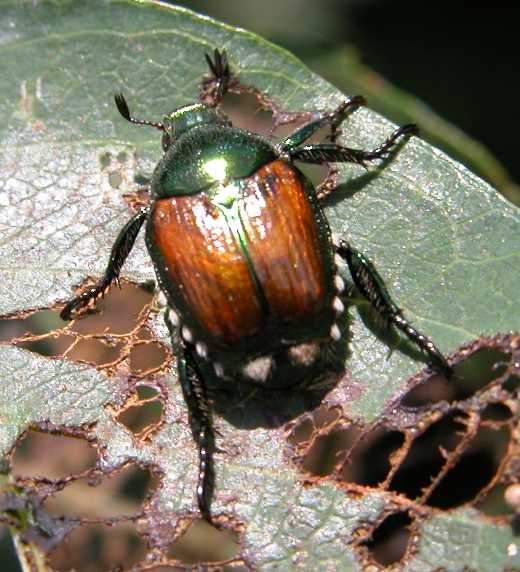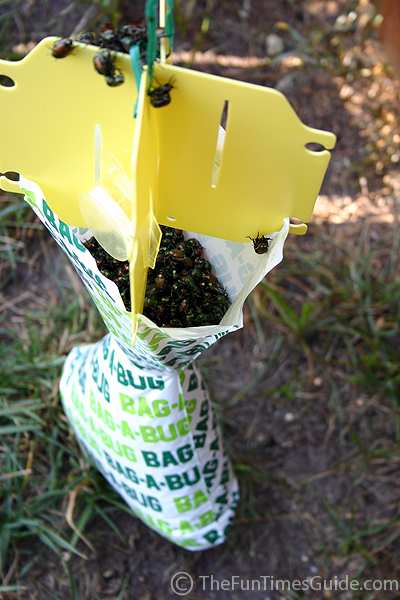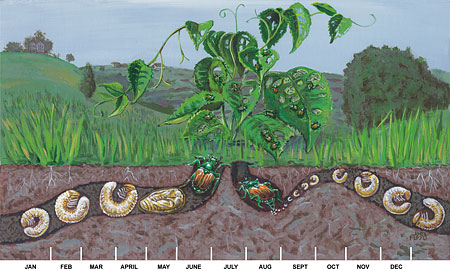



JAPANESE BEETLES were first found in the states in the early 1900's in New Jersey. Since that time they have spread west and have finally reached Minnesota in the 1980's. These beetles used to be mostly known as a crop pest. They destroy fields of soybeans and corn. Here you will see a picture of some Japanese beetles doing some defoliation on a soy bean plant.
It is said that this beetle feasts on over 300 different varieties of plant, but they seem to take a liking to a popular species of trees locally. Within the last year this beetle has done some major damage to linden trees in our area. History has shown that this beetle will keep on doing more damage. Here are some of the most common plants to find these pests:
- Roses
Once these pests get in your yard they can eat every leaf off of your trees. This insect spreads very quickly and reproduces in mass. Its larvae is about the size of a dime and feeds on the roots of your lawn. That makes this pest a double edged sword.
Treatment
Many methods of treatment are available. The most common and effective method of treatment is spraying. Traps are also a very popular method of treatment, but the major drawback is that you will attract every Japanese beetle within a five mile radius without trapping all of them. Disposal of these bugs also becomes a problem. Another option would be systemic treatments or commonly known as trunk injections.
Timing
The bugs affect trees in June and are here through August, depending on the weather of that year. The pest can often defoliate a tree in the matter of a few days. Smaller trees have a hard time against the pest and often are defoliated very quick by a large mass of these beetles.
Above: Popular bag method of catching these little bugs. *INNEFFECTIVE METHOD*
Japanese Beetle Adult

Below is the life cycle of the japanese beetle. This great diagram shows the life stages of the japanese beetle over a whole year. Notice that most of the time these bugs are in the grub stage and only adults for a short period of time. The problem is the grubs are underground and impossible to notice. They eat the roots off of grass as food and kill sections of grass. From June to August we have to worry about adult beetles in our trees as they do major damage. The females attract other males to mate and often they come in swarms. After they pilage your trees and plants they lay their eggs in the soil for the process to start all over again. The best time to treat your trees is in the spring for the systemic method. If these bugs are infesting your trees you will want to spray them immediatly. Arbor Doctor specializes in Japanese beetle treatments. Contact us today to stop these pests from killing your trees.
Japanese Beetle
Request for our services
Use this form to contact Arbor Doctor for an estimate
Name *
Phone *
Address *
City *
E-mail address *
Problem with tree(s)